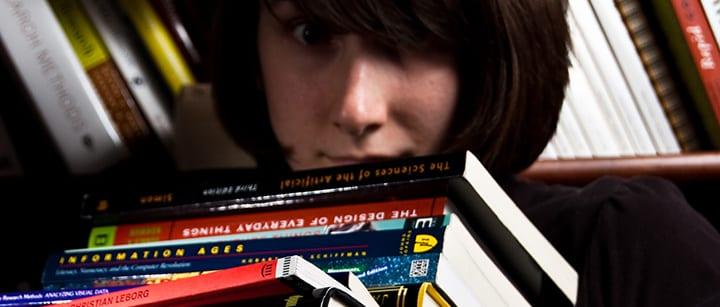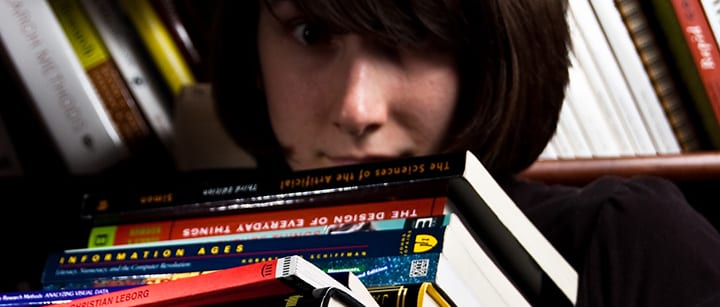Want to learn how to read faster? Tempted by all the promises of speed reading programs and classes? Find out if there’s truth behind the strategies in this guest post by Ann Arbor, MI teacher Elaina R…
Imagine a library full of frantic-looking students, their eyes darting back and forth as they flip through textbooks. These students are attempting the controversial art of speed reading. Unfortunately, many of these students will probably find that they remember very little of the information they are so busily scanning.
This begs the question: do these strategies for learning how to read faster really work? Or is it a fantasy thought up by busy students? Let’s explore the concept of speed reading, whether or not it works, and what might work better.
What is Speed Reading?
Speed reading involves quickly glancing through text. The goal of this type of reading is not to absorb every word. Instead, readers want to quickly understand the gist of the text. They want to be able to regurgitate important themes and summarize the text, even if they miss the details.
As you can imagine, speed reading only works in certain situations. Unfortunately, reading a textbook isn’t one of those situations. There are certain things you cannot scan through with good results.
Speed reading is best for simple reading, such as:
• Mainstream news articles
• Advertising emails and letters
Speed reading is bad for complex reading, such as:
• Textbooks
• Scientific articles
• Literature
Speed Reading Techniques
For lighter reading, here are some tried-and-true techniques that can help you glean the overall themes quickly. Although these techniques probably won’t help you read Chaucer any faster, they might help you clear your inbox or read the news in less time.
Better Than Speed Reading
If you are tempted to try speed reading in an academic setting (you forgot to study for the big test, for example), know that you aren’t going to learn how to read faster in one night. Instead, here are a few techniques that may be more useful to you:
- Read just a hair faster: Instead of attempting to read at lightning speed, go for just a slightly brisker pace than usual. Don’t go overboard – just be conscious of your speed and, while still reading and processing each word, see if you can handle a few more words per minute.
- Chapter summaries: Many textbooks come equipped with summaries at the end of each chapter or section. Others have key words grouped at the ends of chapters. Use these! If you have to study a whole textbook in one night, read all of the summaries and look up any specific topics that are confusing.
- Headings and tables of contents: You can also go through textbooks and look just at the headings and subheadings. Alternately, take a gander at the table of contents. Use this as a guide to help you revisit (and properly read!) the hardest sections.
- Study buddies: Get together with classmates, compare notes, and test each other. If you don’t know where to start, try randomly flipping to a page in the book and asking each other questions from it. If one section is no problem, move on to the next one.
This goes without saying, but the best way to get to know the material is to actually read it. Learn how to manage your time so that you can complete assigned readings, take notes, and really absorb the material before crunch time. Not only is a natural reading pace more effective, it can also be fun. If you have trouble managing your time and studying well, consider hiring a tutor to help you hone these skills.
 Elaina R. is a writer, editor, singer, and voice teacher based in Ann Arbor, Michigan. Her book Slaying Your Admissions Essay Dragon shows how to write application essays that are actually fun to read. Elaina has served as an editor for several notable books as well, including NFL great Adrian Peterson’s autobiography Don’t Dis My Abilities. Learn more about Elaina here!
Elaina R. is a writer, editor, singer, and voice teacher based in Ann Arbor, Michigan. Her book Slaying Your Admissions Essay Dragon shows how to write application essays that are actually fun to read. Elaina has served as an editor for several notable books as well, including NFL great Adrian Peterson’s autobiography Don’t Dis My Abilities. Learn more about Elaina here!
 Photo by RLHyde
Photo by RLHyde
Suzy S.

